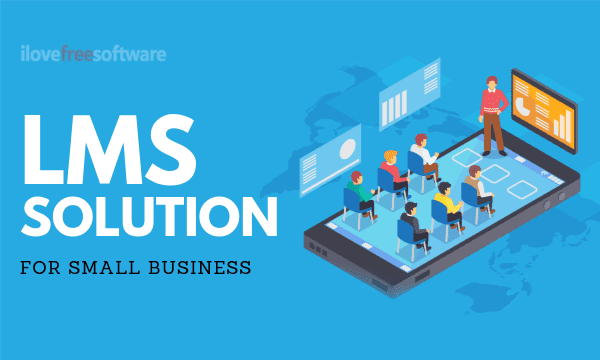How to identify business LMS platforms?
Choosing a Learning Management System: 4 Key Steps
When trying to make your training delivery system future-proof, price shouldn't be the only thing you think about. Instead, when looking at LMS platforms, you should think about things like your company's needs, the preferences of stakeholders, your learning and development goals, and so on. The following tips will help you choose the ideal LMS platform:

1. Evaluate Your Needs
Before evaluating LMS systems, you should first evaluate your needs. Finding the ideal platform requires understanding your needs because different platforms have varying benefits. LMS platforms are typically used by businesses and institutions of higher learning for the following use cases:
- Training Employees - LMS platforms:
Facilitating employee learning is important. Without setting aside separate training dates or locations, you can use an LMS platform to provide training to multiple departments. Additionally, you can easily monitor training effectiveness using sophisticated LMS analytics..
- Induction or Onboarding Training:
Greeting strangers is a demanding undertaking. By creating training materials that outline the background of the business, its policies, the tasks of its workers, its leave policies, and other topics, you may automate the onboarding or induction process using an LMS platform.
- Knowledge Retention:
Maintaining students' interest in the material requires constant reinforcement. By enabling simple access to a comprehensive knowledge base, LMS solutions streamline knowledge management. Older learners or staff upload resources to the LMS, which new learners can use to broaden their expertise.
- General Support:
You might not always be able to switch completely to an LMS. To enhance results, you may also move a portion of your current training delivery methodology to an LMS platform, such as the ability to administer assessments and gamify learning. It's essential to determine your requirements or use case before you can choose the right platform among the top LMS platforms. You might ask, "Who will utilise the LMS?" Can trainees always access the internet? What type of technology will trainees employ? To tailor the training materials to the learners' preferences
- Pay-per-Learner:
You pay a predefined sum for a fixed set of learners in this format.
- Pay-per-active learner:
In contrast to the prior arrangement, you now only have to pay the platform owner when users access your platform within a billing period. Therefore, if fifty users per month utilise your platform, you just have to pay for those fifty users and not the users you have asked to join.
- Subscription:
If you don't know how many people will visit the platform or how many will be active, this approach is appropriate. Take a look at the platform's pricing plan before making a decision.
2. Decide Which LMS Type You Need
There are two types of LMS platforms: libre-source and proprietary. Exclusive platforms are wholly owned by the creator, and customers must pay a significant fee to gain access. Even while a proprietary system has some limitations in terms of flexibility, you may still obtain dependable service, outstanding customer care, and easy usage. These LMS systems are ideally suited to individuals who don't have the skills to create such systems or who need results right away. Oftentimes, open-source LMS systems are free or significantly less expensive than commercial ones. An open-source LMS platform may be customized to meet your needs. An open-source platform allows you to customize it in any way you see fit, whether it is through bespoke features or interfaces with external parties. However, unlike proprietary systems, an open-source platform does not offer expertise to assist you in difficult circumstances. Therefore, based on the features you want and your budget, select the LMS platform type.
3. Check the Pricing
Private LMS platforms are simple to use and have amazing capabilities. Additionally, you have price discretion based on your requirements. The three types of pricing that proprietary LMS platforms often provide are as follows:
4. Check out the features
The top LMS platforms provide you the ability to select, work together
on, and easily personalise the material. To suit your corporate
branding, you may alter the platform's theme, appearance, and
layout.
Additionally, when using an LMS platform like AFI Digital, you keep ownership
and intellectual property rights to your material. Therefore, no user
licence is required for the delivery of the material.
You may also modify the process to fit the user hierarchy and training
requirements of your business using high-quality LMS systems. You may
also select the Lplatform's cloud-based hosting solution or your
official business cloud/intranet server.


Concluding
It might be difficult to choose the right LMS platform from hundreds of options. However, having a thorough understanding of the types and characteristics will make it easier for you to choose the right one. Before subscribing to an LMS, you can request a live system demo from the vendor. You may determine whether the platform's features and usability meet your needs by seeing a live demo. To manage your training sessions simply, AfiDigital provides a 100% cloud-based SaaS LMS platform. Our comprehensive LMS services include managing learning content as well as LMS administration and support. To find out more about AFI's procedures, visit here.

LEAVE A REPLY
Your email address will not be published. Required fields are marked *